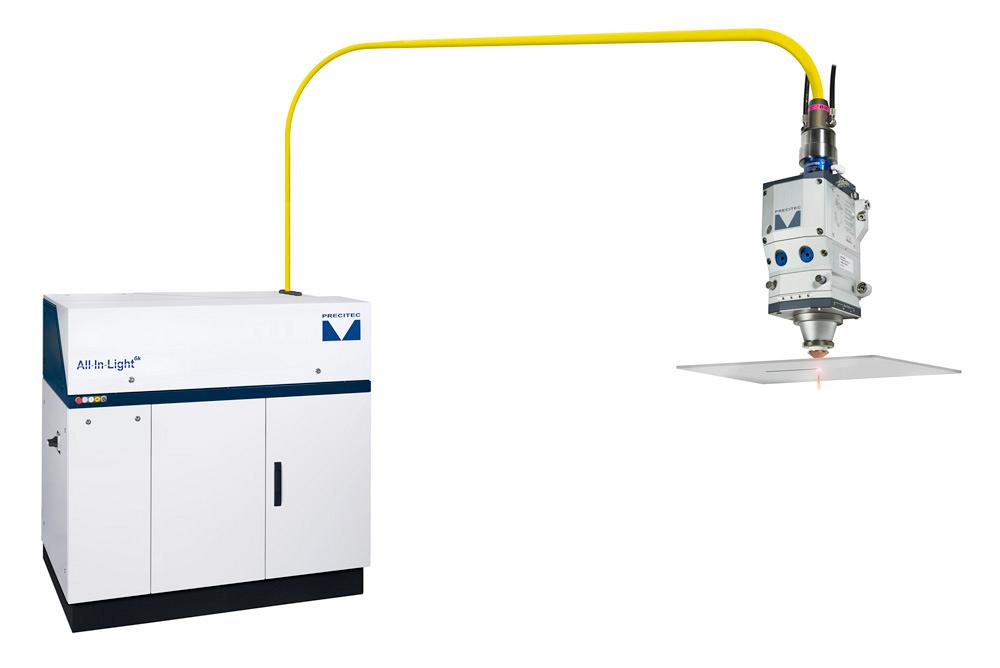Senior Editor
- FMA
- The Fabricator
- FABTECH
- Canadian Metalworking
Categories
- Additive Manufacturing
- Aluminum Welding
- Arc Welding
- Assembly and Joining
- Automation and Robotics
- Bending and Forming
- Consumables
- Cutting and Weld Prep
- Electric Vehicles
- En Español
- Finishing
- Hydroforming
- Laser Cutting
- Laser Welding
- Machining
- Manufacturing Software
- Materials Handling
- Metals/Materials
- Oxyfuel Cutting
- Plasma Cutting
- Power Tools
- Punching and Other Holemaking
- Roll Forming
- Safety
- Sawing
- Shearing
- Shop Management
- Testing and Measuring
- Tube and Pipe Fabrication
- Tube and Pipe Production
- Waterjet Cutting
Industry Directory
Webcasts
Podcasts
FAB 40
Advertise
Subscribe
Account Login
Search
Technology Spotlight: Reading the laser cutting beam—there’s an app for that
Cutting head offers visual feedback
- By Tim Heston
- February 1, 2017
- Article
- Laser Cutting

This cutting head has four LEDs (shown in green) indicating the status of four key process variables: temperature, pressure, focal position, and the cover slide.
In critical cutting applications, you might see a technician peer carefully through the laser-safe window of a laser cutting machine. He’s looking for telltale signs of trouble in piercing and kerf creation. Today you also might find such a person take out a phone or tablet—and pull up an app.
Laser cutting is a subtle science, especially when cutting thick plate. It’s a balancing act between beam parameters, gas-flow dynamics, and the optics, all working together to make a clean kerf in a particular material grade and thickness.
If material conditions change ever so slightly, or if parameters aren’t set up quite right, the quality of the cut can suffer, particularly near the bottom of the cut edge. Rough striations and dross are signs that molten metal isn’t being evacuated as it should be.
Troubleshooting a bad cut isn’t easy, but modern cutting systems are attempting to make the task a bit easier. For instance, German manufacturer Precitec offers technologies that, through the use of sensors on the cutting head, help operators and technicians diagnose a cutting or piercing problem. Via Bluetooth®, they also can feed that data to a phone or tablet, which helps an operator read and interpret the data.
The technology comes with the company’s ProCutter line. The cutting head is available separately, of course, but it’s now also being sold as part of the company’s All-in-Light package, which includes the beam source (a Precitec disk laser licensed from TRUMPF) and the delivery fiber, along with the cutting head.
The cutting head has four different LEDs that show the status of four key process areas: focal position, temperatures, pressures, and the protective window or cover slide. Within each area are multiple subcategories of measurement. If one of the lights on the cutting head changes, something’s amiss.
“For instance, consider temperature,” said Brian Smith, sales and service engineer at Precitec’s Wixom, Mich., office. “You have four different sensors located throughout the head, and all of these help you actively troubleshoot. One sensor measures the temperature of the lens, one measures the temperature of the cover slide, another measures the temperature of the cutting head body, and yet another measures temperature of the collimating optics.”
Say an operator swaps a cover slide but fails to lock it in place. As Smith described, “If your cover slide cartridge is not fully closed or connected, [the system] will send you an indication, you’ll see an error page [on your phone or tablet app], and you’ll see that the protective cover cartridge is not installed correctly.”
Feedback in modern laser cutting has become more critical simply because of the range of thicknesses being cut, even by solid-state lasers. On Precitec’s head, for instance, optics allow operators to switch between beam parameters that best suit thin or thick plate. (The company calls this function EdgeTec.) And with what the company calls PierceTec, sensors in the cutting heads actively measure feedback signals during the pierce to adjust pierce settings on-the-fly.
So now when an operator peers into the laser work envelope and monitors the beam, he’s not just looking for subtle visual cues. He sees an LED change color on the cutting head, picks up his tablet, swipes to the appropriate screen, and starts to troubleshoot. Most important, the problem is caught immediately, not after cutting or when parts reach the next operation.
About the Author

Tim Heston
2135 Point Blvd
Elgin, IL 60123
815-381-1314
Tim Heston, The Fabricator's senior editor, has covered the metal fabrication industry since 1998, starting his career at the American Welding Society's Welding Journal. Since then he has covered the full range of metal fabrication processes, from stamping, bending, and cutting to grinding and polishing. He joined The Fabricator's staff in October 2007.
Related Companies
subscribe now

The Fabricator is North America's leading magazine for the metal forming and fabricating industry. The magazine delivers the news, technical articles, and case histories that enable fabricators to do their jobs more efficiently. The Fabricator has served the industry since 1970.
start your free subscription- Stay connected from anywhere

Easily access valuable industry resources now with full access to the digital edition of The Fabricator.

Easily access valuable industry resources now with full access to the digital edition of The Welder.

Easily access valuable industry resources now with full access to the digital edition of The Tube and Pipe Journal.
- Podcasting
- Podcast:
- The Fabricator Podcast
- Published:
- 04/16/2024
- Running Time:
- 63:29
In this episode of The Fabricator Podcast, Caleb Chamberlain, co-founder and CEO of OSH Cut, discusses his company’s...
- Industry Events
16th Annual Safety Conference
- April 30 - May 1, 2024
- Elgin,
Pipe and Tube Conference
- May 21 - 22, 2024
- Omaha, NE
World-Class Roll Forming Workshop
- June 5 - 6, 2024
- Louisville, KY
Advanced Laser Application Workshop
- June 25 - 27, 2024
- Novi, MI
































